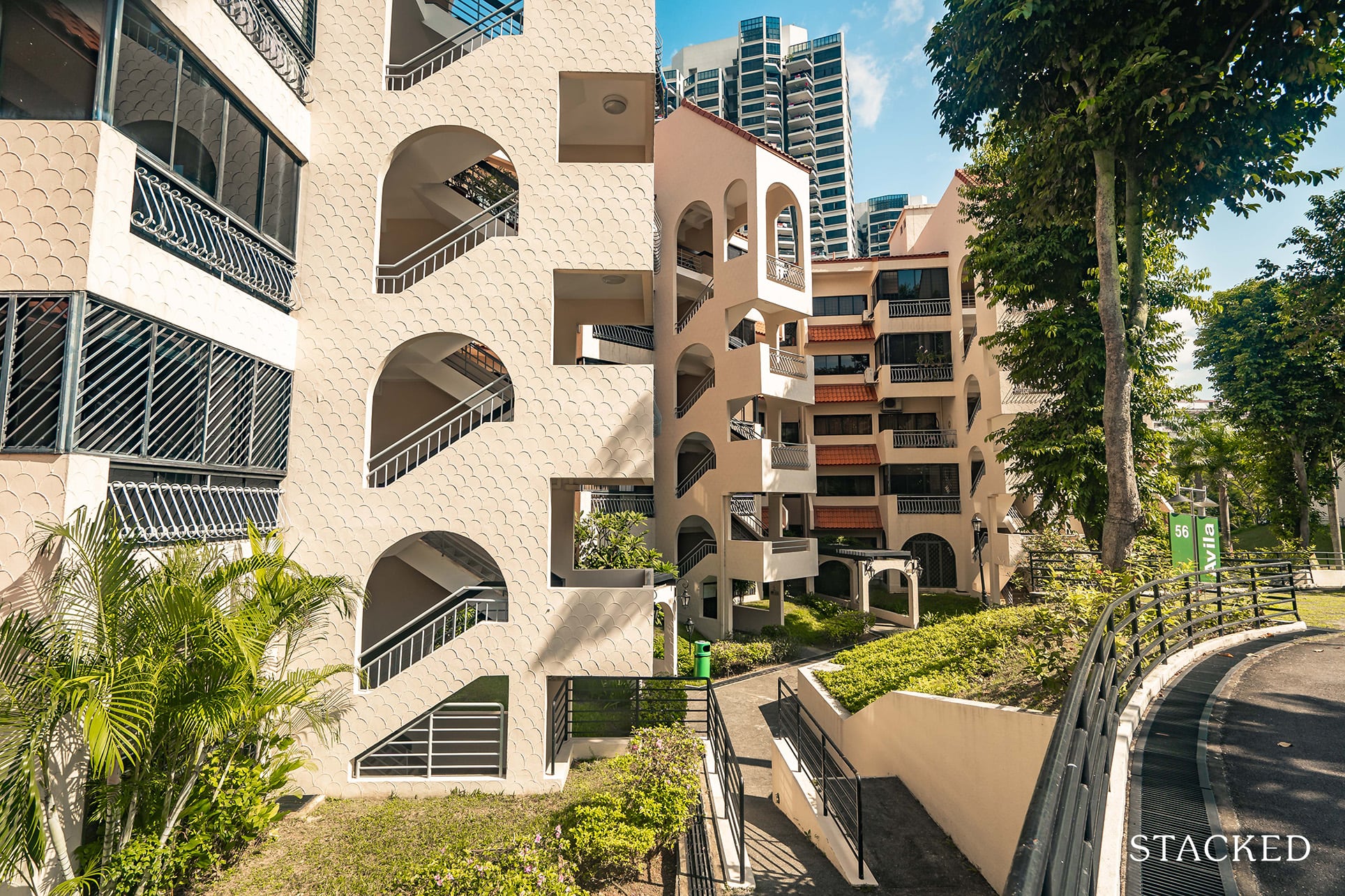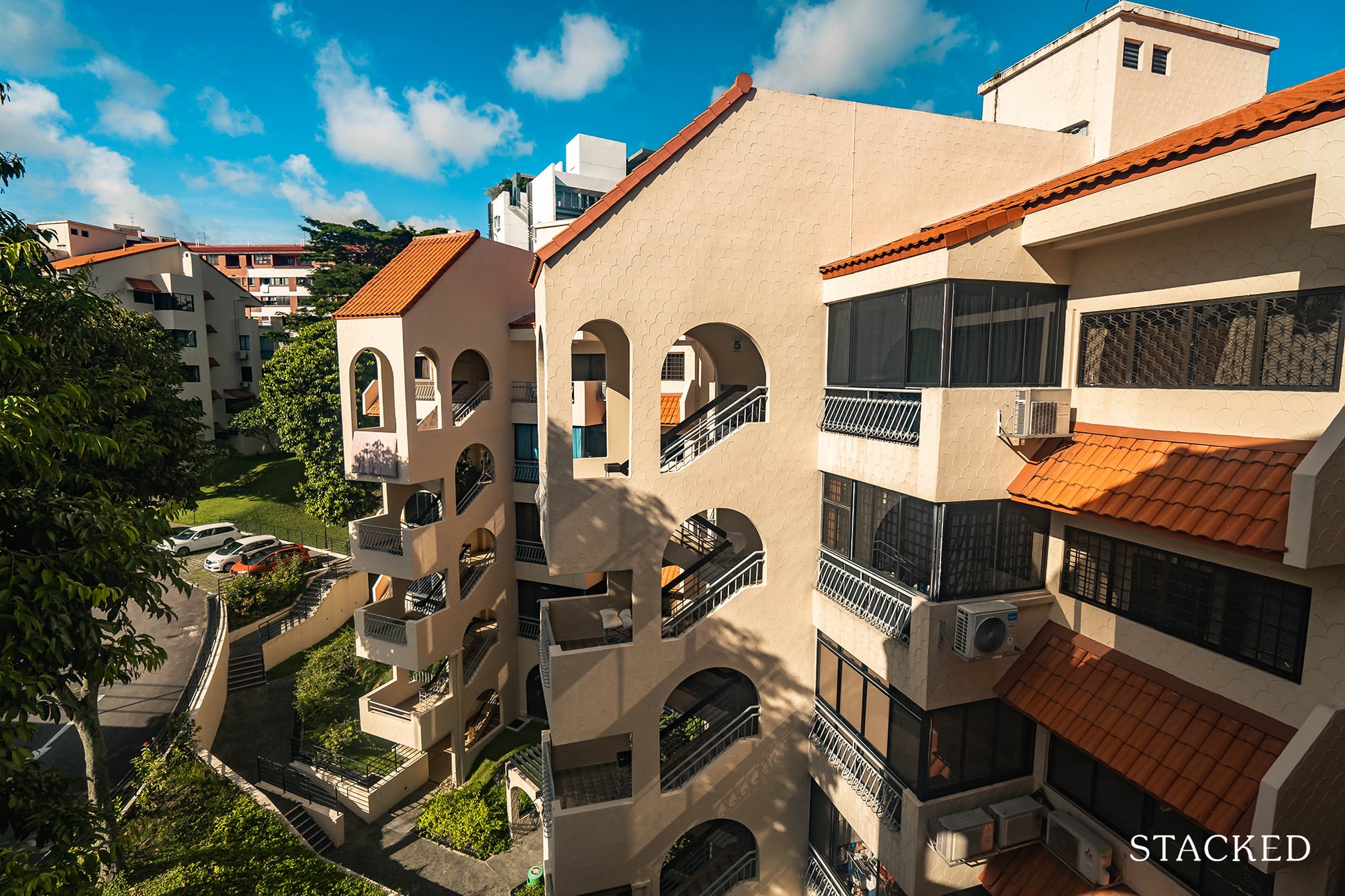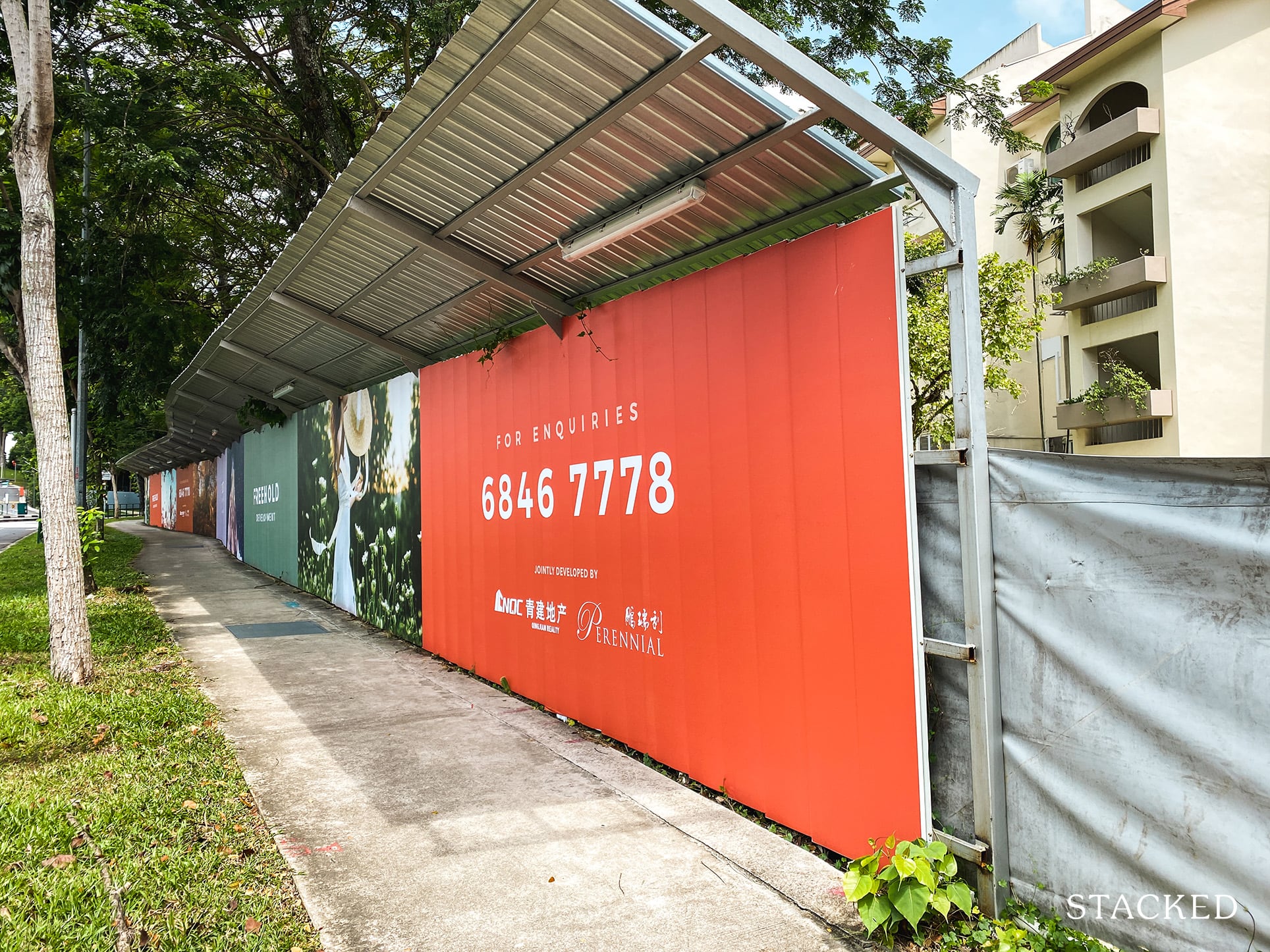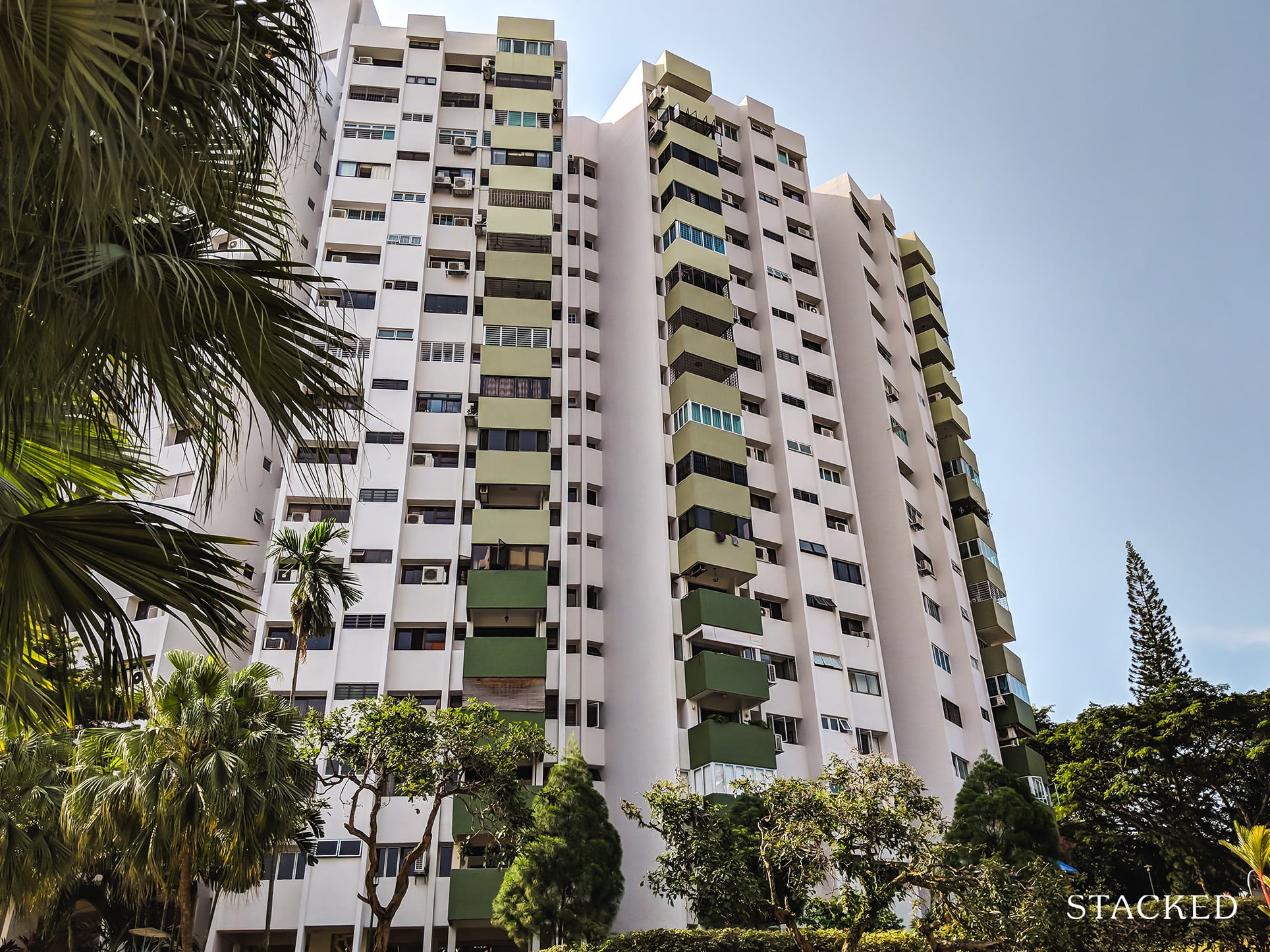7 Major Risk Factors When Counting On An En-bloc Sale

Get The Property Insights Serious Buyers Read First: Join 50,000+ readers who rely on our weekly breakdowns of Singapore’s property market.
A seasoned content strategist with over 17 years in the real estate and financial journalism sectors, Ryan has built a reputation for transforming complex industry jargon into accessible knowledge. With a track record of writing and editing for leading financial platforms and publications, Ryan's expertise has been recognised across various media outlets. His role as a former content editor for 99.co and a co-host for CNA 938's Open House programme underscores his commitment to providing valuable insights into the property market.
“Don’t worry,” some sellers might tell you, “older properties mean more en-bloc potential”. And that’s how some buyers end up with 40+ year old properties, that they struggle to sell when said en-bloc doesn’t come to pass.
Due to the en-bloc fever of 2017/18, or during the property heyday of 2013, some buyers are under the impression that collective sales are a sure-fire bet. After all, how many condos get past 40 years of age before an en-bloc?
However, it’s not a good idea to get overconfident with major commitments like home ownership. Even if most condos do go en-bloc before lease expiry, that’s of no consolation if you end up with one of the uncommon condos that don’t. There are some potential risk factors to consider, before you decide to buy an old property for en-bloc gains:
- Larger developments may see limited demand due to ABSD deadlines
- Policy changes are unpredictable, and can foil en-bloc plans
- Restrictions in terms of maximum Gross Plot Ratio
- Traffic restrictions are now a factor
- The ultimate landowner may not want to renew the lease
- Timing issues and the SSD can pose an unexpected hazard
- Bulk ownership can be an issue
1. Larger developments may see limited demand due to ABSD deadlines
Small and mid-sized developments (around 600 units or less) are a bit less risky in the en-bloc department. But large developments, especially 1,000+ unit mega-projects, are best avoided if you’re counting on an en-bloc.
The main reason is the Additional Buyers Stamp Duty (ABSD) for developers. This is a tax of 30 per cent on the land price, if developer is unable to complete and sell every unit within five years.
The ABSD deadline applies regardless of size: if the project has 300 units, the developer has five years to finish and sell it. If the project has 1,200 units, the developer also has five years to finish and sell it.
Take into account, the Tampines Court en-bloc, which has been relaunched as Treasure at Tampines. At its current take up rate of 57%, it has sold 1,256 units so far – which for even some mega developments (Stirling Residences, JadeScape come to mind), would have already represented a fully sold project.
Those staying in similar mega developments like Mandarin Gardens, Pine Grove, and Pandan Valley hoping for en-bloc will be hoping that Treasure at Tampines would end up with a successful 100% sold status by the end of 5 years. Anything less, and developers would definitely be less inclined to look for bigger projects moving forward.
As such, many developers hesitate to purchase large land plots / developments. A good recent example is Braddell View; at 1.14 million sq. ft. and over 900 units, analysts even called its failed en-bloc attempt “unsurprising”.
The massive Pine Grove is another example, with 3 failed en-bloc attempts so far.
Having new MRT stations, malls, and other amenities nearby do raise en-bloc potential; but you also need to consider if the sheer size of the development is going to be a drawback.
2. Policy changes are unpredictable, and can foil en-bloc plans
Some policy changes – such as cooling measures – can change the real estate market overnight. Developers, just like individual buyers, tend to have a knee jerk reaction when they happen.
In July 2018 for instance, new measures kicked in that increased the ABSD. By December of that year, 30 en-bloc attempts across the island had failed. This was despite half of them lowering prices, in light of the new cooling measures.

You could have been waiting for years for an en-bloc, only to have it crushed after a single government announcement.
(Incidentally, the fees to consult the legal firm, property firm, and other parties for the en-bloc don’t go away even if the en-bloc fails; it’s likely to come from the maintenance fund you’ve been contributing to, so it’s wasted money).
3. Restrictions in terms of maximum Gross Plot Ratio
We have an earlier article on how plot ratios work, and how they’re defined in the master plan. The maximum Gross Plot Ratio (GPR) determines how many units can be built, along with the maximum height.
In the same article, we pointed out that the GPR can be revised downward, as was the case with Hillview House.
All of this is pertinent to en-bloc potential. Developers need to ensure they can build sufficient units to cover the cost of:
- Buying the land from you
- Topping up the lease (if it’s 99-years)
- Paying for the Development Charges of the property
- Covering the cost of construction, marketing, legal fees, etc.
This almost always means the new project has to be bigger than the last one, to cover the costs and still make a profit. If that’s not possible, developers are unlikely to proceed with the sale.
While you can check the URA Master Plan anytime, you can’t predict where and how URA will decide to change the GPR. This makes for another risk factor that’s outside your control.
4. Traffic restrictions are now a factor

Developers no longer need approval from just URA. They’re now required to get approval from the Land Transport Authority (LTA) also, regarding the number of units they’re allowed to build.
A traffic impact assessment is used to determine if the new number of units would contribute to traffic congestion. This is in addition to usual restrictions, like the maximum GFA (see point 3).
Developers may offer less for an en-bloc sale, if they have to trim the total number of units.
5. The ultimate landowner may not want to renew the lease
We’ve mentioned this in an earlier article, where we explained how a 99-year leasehold property can be sitting on freehold land (i.e. the owner of the land rented it out for 99-years).
In these cases, the developer has to pay the land owner, not the government, to top-up the 99-year lease. Problems arise, however, if the land owner isn’t inclined to renew the lease (they may have other plans for the land).
In these cases, an en-bloc isn’t possible as the developer can’t top up the lease.
Leasehold properties on freehold land are seldom indicated outright; so this is something you need to specifically ask about. Avoid these sorts of properties if you’re hoping for an en-bloc.
6. Timing Issues and the SSD can pose an unexpected hazard

The Sellers Stamp Duty (SSD) applies when selling within the first, second, or third year of purchasing a property (12 per cent, eight per cent, and four per cent of sales proceeds respectively).
The SSD still applies in the event of an en-bloc sale. So if you buy an old property and it goes en-bloc in the same year, you’ll pay a 12 per cent tax.
There are also opportunity costs involved – you might have lost the chance to purchase another desired unit, by buying your now-to-be-en-bloc’ed property. There’s also the inconvenience of having to move out again; sometimes for little more than break-even gains after paying the SSD.
Beyond this, there are timing complications. A developer might be giving you the sales proceeds as late as two years after the en-bloc; this can mean having to use a bridging loan, paying for temporary accommodation, etc. If you have a new home in mind, bear in mind the price can go up, or it can become unavailable, by the time you get your sale proceeds.
These all add unexpected costs that diminish an “en-bloc windfall”.
We can help you with the timing issues though, if you’re facing an en-bloc and need a new home. Contact us on Facebook, so we can present you with some cost-effective options.
7. Bulk ownership can be an issue
Some properties may have a number of units owned by a single investor (very possible back in the day), or by a single entity. As an example, the Lumos has 34 unsold units owned by a private equity real estate group. Not that the Lumos will be going en-bloc anytime soon, but if that was ever a possibility, having such a large group would no doubt have a huge sway on the outcome of an en-bloc deal.
Of course, on the flip side, this could be a good thing too – so it is really dependant on the motivations of the investor/entity. But ultimately, know that these are things not within your control.
We’re not saying an en-bloc is a bad thing.
It’s great when it happens at the right time, and the potential for en-bloc gives private properties a big lead over HDB counterparts.
But the potential an en-bloc has become overused as a marketing gimmick, especially for very old properties. It’s just not as straightforward as some sellers make it out to be; and if you’re getting a 30+ year old leasehold property, it should never be with the assumption that an en-bloc will happen.
You can also browse alternative options on Stacked, where we provide in-depth reviews of Singapore’s private property market.
At Stacked, we like to look beyond the headlines and surface-level numbers, and focus on how things play out in the real world.
If you’d like to discuss how this applies to your own circumstances, you can reach out for a one-to-one consultation here.
And if you simply have a question or want to share a thought, feel free to write to us at stories@stackedhomes.com — we read every message.
Ryan J. Ong
A seasoned content strategist with over 17 years in the real estate and financial journalism sectors, Ryan has built a reputation for transforming complex industry jargon into accessible knowledge. With a track record of writing and editing for leading financial platforms and publications, Ryan's expertise has been recognised across various media outlets. His role as a former content editor for 99.co and a co-host for CNA 938's Open House programme underscores his commitment to providing valuable insights into the property market.Read next from Property Advice

Property Advice We’re In Our 50s And Own An Ageing Leasehold Condo And HDB Flat: Is Keeping Both A Mistake?

Property Advice Should We Buy An Old 99-Year Leasehold Condo To Live In: Will It’s Value Fall When The Lease Runs Out?

Property Advice We Own A $800K 1-Bedder And A $1.1M 3-Bedder: Is It Possible To Upgrade To A 4-Bedder Condo?

Property Advice I Own A 55-Year-Old HDB Flat, But May Have To Sell — Can I Realistically Buy A Freehold Condo With $700K?
Latest Posts

Pro How A 625-Unit Heartland Condo Launched In 2006 Became One Of 2025’s Top Performers

Property Investment Insights Does Buying A One-Bedroom Condo Still Make Sense As An Investment In 2026

Property Market Commentary Why This Once-Ulu Town In Singapore Is Going To Change (In A Big Way)

Editor's Pick This HDB Just Crossed $1.3M For The First Time — In An Unexpected Area

Singapore Property News “I Never Thought I’d Be Sued by a Tenant.” What Long-Time Landlords in Singapore Miss

Editor's Pick I Lived In Bayshore When It Was ‘Ulu’. Here’s How Much It Has Changed

Editor's Pick HDB Resale Prices Finally Slowed in 2025 — Will It Continue in 2026?

Singapore Property News Breaking News: District 23 Condo Sells Out In Under Two Years At $2,120 Psf Average

On The Market Here Are The Cheapest 3-Bedroom Condos in Central Singapore You Can Still Buy From $1.15M

Property Market Commentary Why The Singapore Property Market Will Be Different In 2026 — And It’s Not Just About Prices

Editor's Pick 2025 Year-End Review Of The Singapore Property Market: What The Numbers Reveal

Pro This 21-Year-Old Condo Didn’t Sell Out Initially, Yet Became A Top Performer

Editor's Pick How The HDB Resale Market Performed In 2025, And What It Means For 2026 Prices

Editor's Pick 4 Key Trends Reshaping Singapore’s New Launch Condo Market In 2026

Editor's Pick What I Only Learned After My First Year Of Homeownership In Singapore



